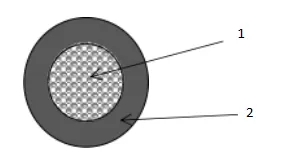Dec . 05, 2024 18:53 Back to list
swing check valve
Understanding Swing Check Valve The Essentials for Efficient Flow Control
In the world of fluid mechanics and pipeline systems, valves play a crucial role in regulating the flow of liquids and gases. Among various types of valves, the swing check valve stands out for its unique design and functionality. This article explores the fundamental aspects of swing check valves, their applications, and their significance in ensuring efficient flow control.
What is a Swing Check Valve?
A swing check valve is a type of one-way valve that allows fluid to flow in one direction while preventing backflow. The valve accomplishes this through the use of a hinged disc, or flap, which swings open to permit flow and closes automatically when the flow reverses. Unlike other check valves that may utilize springs or other mechanisms, the swing check valve relies on the momentum of the fluid and gravity to operate.
Design and Construction
The basic components of a swing check valve include the body, disc, shaft, and seat. The valve body is typically made from materials such as stainless steel, cast iron, or PVC, depending on the application and the nature of the fluid to be handled. The disc is usually shaped like a half-circle and is connected to the pivot point (the hinge) at the top of the valve body.
The seat is the sealing surface that ensures a tight closure when the disc swings back into place. The design must ensure minimal turbulence and pressure drop during operation, which is a critical factor in maintaining system efficiency. Swing check valves may also come in various types, such as vertical or horizontal configurations, depending on the installation requirements.
Working Principle
When fluid flows through the valve, the pressure pushes the disc away from the seat, allowing fluid to pass through. This mechanism is essential in various applications where preventing backflow is critical, such as in water supply systems, sewage treatment plants, and industrial processes. When the flow ceases or reverses, the disc swings back into place due to gravity or the fluid’s pressure, effectively sealing the valve and stopping backflow.
Applications of Swing Check Valves
swing check valve

Swing check valves are widely used in various sectors, including
1. Water and Waste Water In municipal water systems, swing check valves are often utilized in pump discharge lines to prevent backflow into the pump, thus safeguarding the equipment.
2. Industrial Systems Many industrial processes require the control of flow in piping systems, where swing check valves ensure that fluids do not reverse direction, which can be detrimental to equipment and process control.
3. Heating and Cooling Systems In HVAC applications, these valves help maintain the integrity of the system by preventing the reverse flow of hot or cold media.
4. Marine Applications Swing check valves are used in shipbuilding and marine engineering to prevent the backflow of seawater, ensuring the safety of on-board systems.
Advantages and Limitations
The swing check valve offers several advantages, including a straightforward design, low pressure drop, and reliable operation. However, they also come with limitations. For instance, they may require more installation space than other check valve types, and their operation can be affected by the flow rate and pressure conditions.
Furthermore, the potential for water hammer — a pressure surge that occurs when fluid in motion is forced to stop or change direction suddenly — can be an issue in certain applications. Careful consideration of the system's dynamics is essential when selecting swing check valves.
Conclusion
Swing check valves play a vital role in many fluid systems by ensuring unidirectional flow and preventing backflow, thereby enhancing the reliability and safety of operations. Their straightforward design and ease of use make them a popular choice in a variety of applications. However, like any other mechanical component, proper selection, installation, and maintenance are critical to their efficiency and longevity. Understanding these valves can greatly contribute to better fluid handling and management in both industrial and municipal systems. Whether you are a designer, engineer, or operator, knowing about swing check valves can help in making informed decisions to optimize system performance.
Share
-
priming-a-pump-with-a-foot-valve-with-strainerNewsAug.23,2025
-
the-importance-of-a-y-strainer-in-pump-protectionNewsAug.23,2025
-
stainless-steel-ball-check-valve-for-high-purity-applicationsNewsAug.23,2025
-
common-applications-for-wafer-type-butterfly-valvesNewsAug.23,2025
-
seat-options-for-a-12-inch-knife-gate-valveNewsAug.23,2025
-
the-lifespan-of-a-typical-dismantling-jointNewsAug.23,2025


